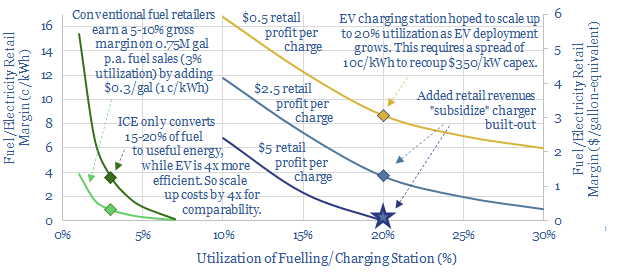
This 14-page note compares the economics of EV charging stations with conventional fuel retail stations. They are fundamentally different. Our main question is whether EV chargers will ultimately get over-built,…
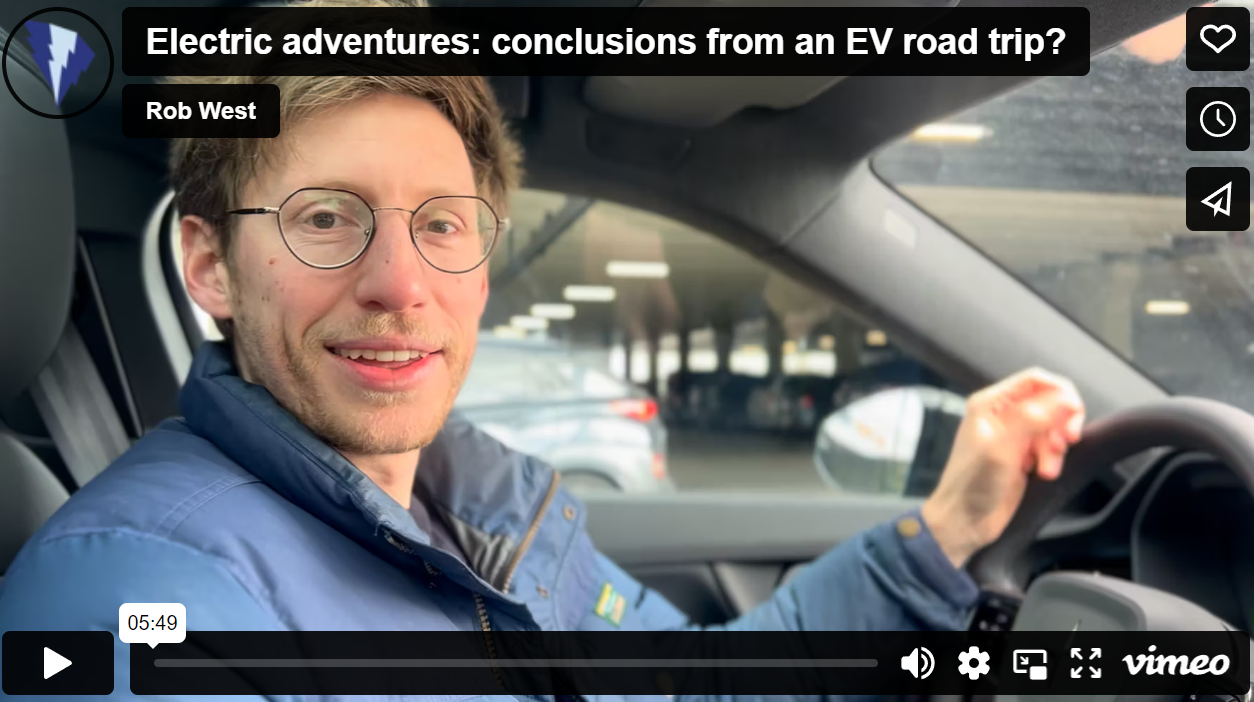
…grid (65% nuclear). Combined with the prevalence of onshore wind in Northern Europe, you can easily convince yourself that you are charging using very low-carbon electricity. (2). Chargers benefit retailers….

This 14-page note compares the economics of EV charging stations with conventional fuel retail stations. They are fundamentally different. Our main question is whether EV chargers will ultimately get over-built,…
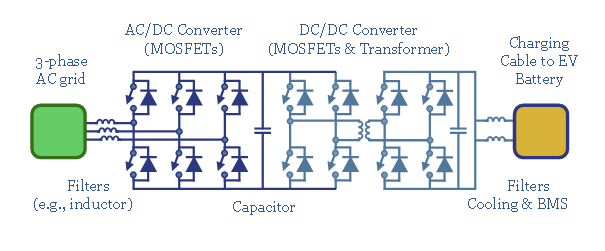
…re-capped on page 2, including the key numbers. But who are the ‘shovel-makers’ that will benefit if charging stations get over-built? The simple power electronics for electric vehicle charging are…
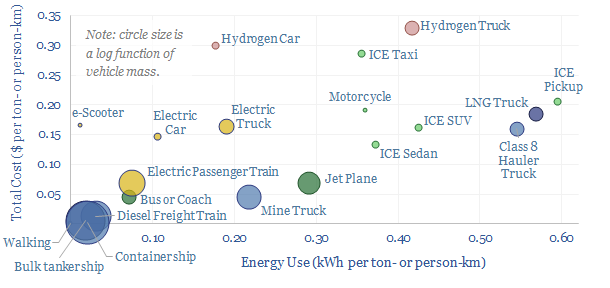
…EV Charging. Each 1,000 EVs will ultimately require 40 Level 2 (30-40kW) and 3.5 Level 3 (100+ kW) chargers (NREL estimates). But we wonder if EV charging infrastructures will ultimately…
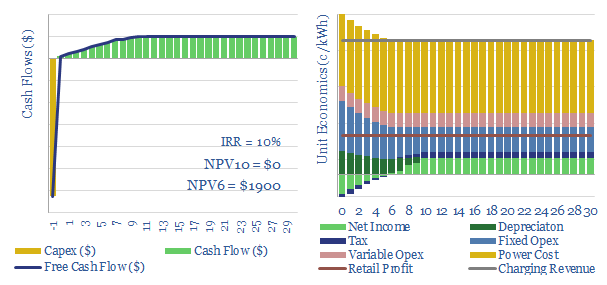
…can lead to incremental retail purchases and for larger, faster chargers. Economics are least favorable around multi-family apartments, charging at work and for slower charging speeds. An economic increment can…
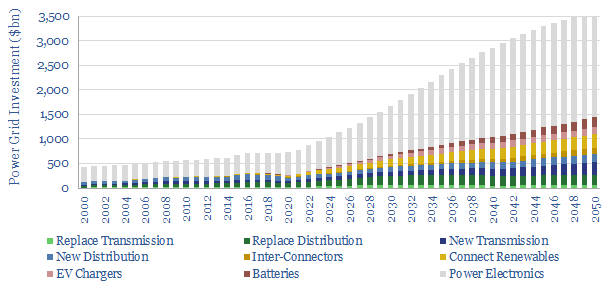
…1,000 EVs will likely require 40 Level 2 chargers (30-40kW) and 3 Level 3 fast-chargers (100-200kW), so our numbers ultimately have $100bn pa being spent on EV charging in 2025-50….
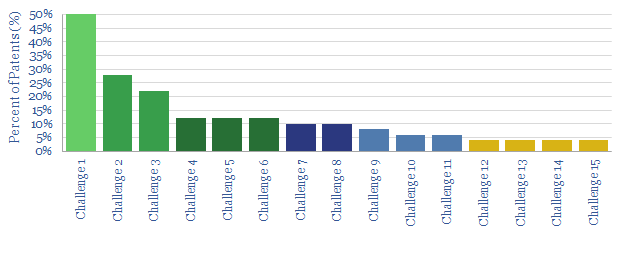
…EV charging will require complex algorithms to ensure grid stability, creating an opportunity for big data companies; vehicle-manufacturers are concerned about balancing the convenience of EV charging with the investment…
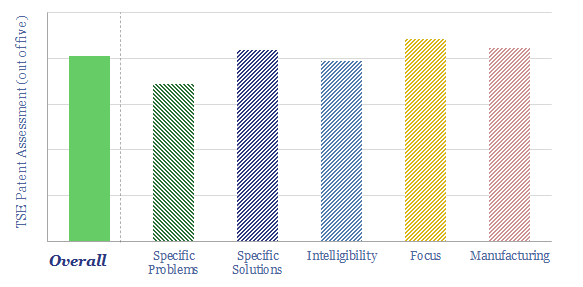
…that are heavily focused on operational aspects of running EV charging networks, especially the customer and EVSE provider experience. Many also cover the look-and-feel of charging stations and their components….
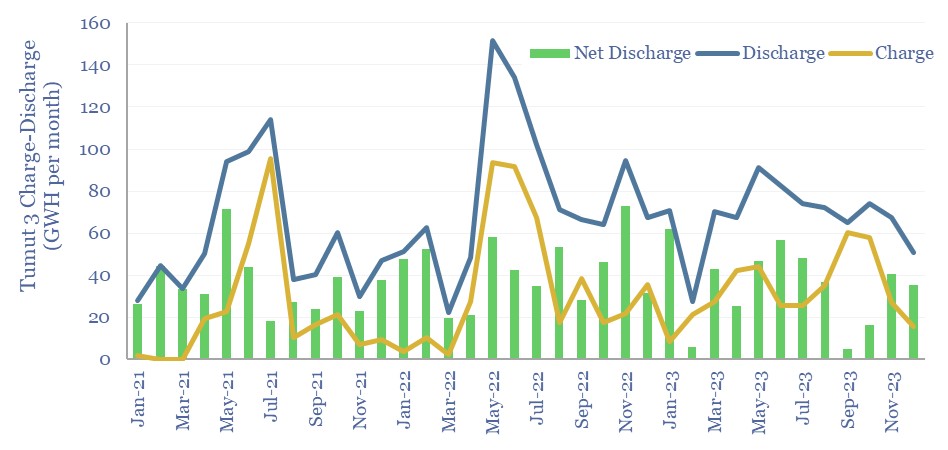
…discharging, but small quantities of charging, such as May-2021 or November-2022, then we can see up to 40-hours of cumulative discharging. This is about 10x longer than a lithium ion…









